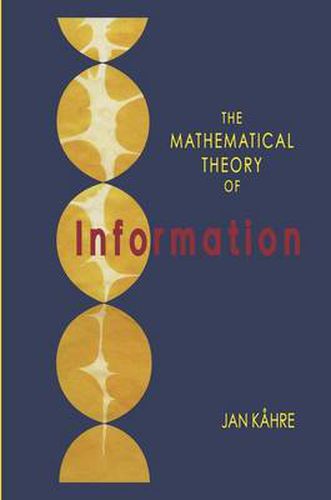Readings Newsletter
Become a Readings Member to make your shopping experience even easier.
Sign in or sign up for free!
You’re not far away from qualifying for FREE standard shipping within Australia
You’ve qualified for FREE standard shipping within Australia
The cart is loading…






This title is printed to order. This book may have been self-published. If so, we cannot guarantee the quality of the content. In the main most books will have gone through the editing process however some may not. We therefore suggest that you be aware of this before ordering this book. If in doubt check either the author or publisher’s details as we are unable to accept any returns unless they are faulty. Please contact us if you have any questions.
The general concept of information is here, for the first time, defined mathematically by adding one single axiom to the probability theory. This Mathematical Theory of Information is explored in fourteen chapters: 1. Information can be measured in different units, in anything from bits to dollars. We will here argue that any measure is acceptable if it does not violate the Law of Diminishing Information. This law is supported by two independent arguments: one derived from the Bar-Hillel ideal receiver, the other is based on Shannon’s noisy channel. The entropy in the ‘classical information theory’ is one of the measures conforming to the Law of Diminishing Information, but it has, however, properties such as being symmetric, which makes it unsuitable for some applications. The measure reliability is found to be a universal information measure. 2. For discrete and finite signals, the Law of Diminishing Information is defined mathematically, using probability theory and matrix algebra. 3. The Law of Diminishing Information is used as an axiom to derive essential properties of information. Byron’s law: there is more information in a lie than in gibberish. Preservation: no information is lost in a reversible channel. Etc. The Mathematical Theory of Information supports colligation, i. e. the property to bind facts together making ‘two plus two greater than four’. Colligation is a must when the information carries knowledge, or is a base for decisions. In such cases, reliability is always a useful information measure. Entropy does not allow colligation.
$9.00 standard shipping within Australia
FREE standard shipping within Australia for orders over $100.00
Express & International shipping calculated at checkout
This title is printed to order. This book may have been self-published. If so, we cannot guarantee the quality of the content. In the main most books will have gone through the editing process however some may not. We therefore suggest that you be aware of this before ordering this book. If in doubt check either the author or publisher’s details as we are unable to accept any returns unless they are faulty. Please contact us if you have any questions.
The general concept of information is here, for the first time, defined mathematically by adding one single axiom to the probability theory. This Mathematical Theory of Information is explored in fourteen chapters: 1. Information can be measured in different units, in anything from bits to dollars. We will here argue that any measure is acceptable if it does not violate the Law of Diminishing Information. This law is supported by two independent arguments: one derived from the Bar-Hillel ideal receiver, the other is based on Shannon’s noisy channel. The entropy in the ‘classical information theory’ is one of the measures conforming to the Law of Diminishing Information, but it has, however, properties such as being symmetric, which makes it unsuitable for some applications. The measure reliability is found to be a universal information measure. 2. For discrete and finite signals, the Law of Diminishing Information is defined mathematically, using probability theory and matrix algebra. 3. The Law of Diminishing Information is used as an axiom to derive essential properties of information. Byron’s law: there is more information in a lie than in gibberish. Preservation: no information is lost in a reversible channel. Etc. The Mathematical Theory of Information supports colligation, i. e. the property to bind facts together making ‘two plus two greater than four’. Colligation is a must when the information carries knowledge, or is a base for decisions. In such cases, reliability is always a useful information measure. Entropy does not allow colligation.